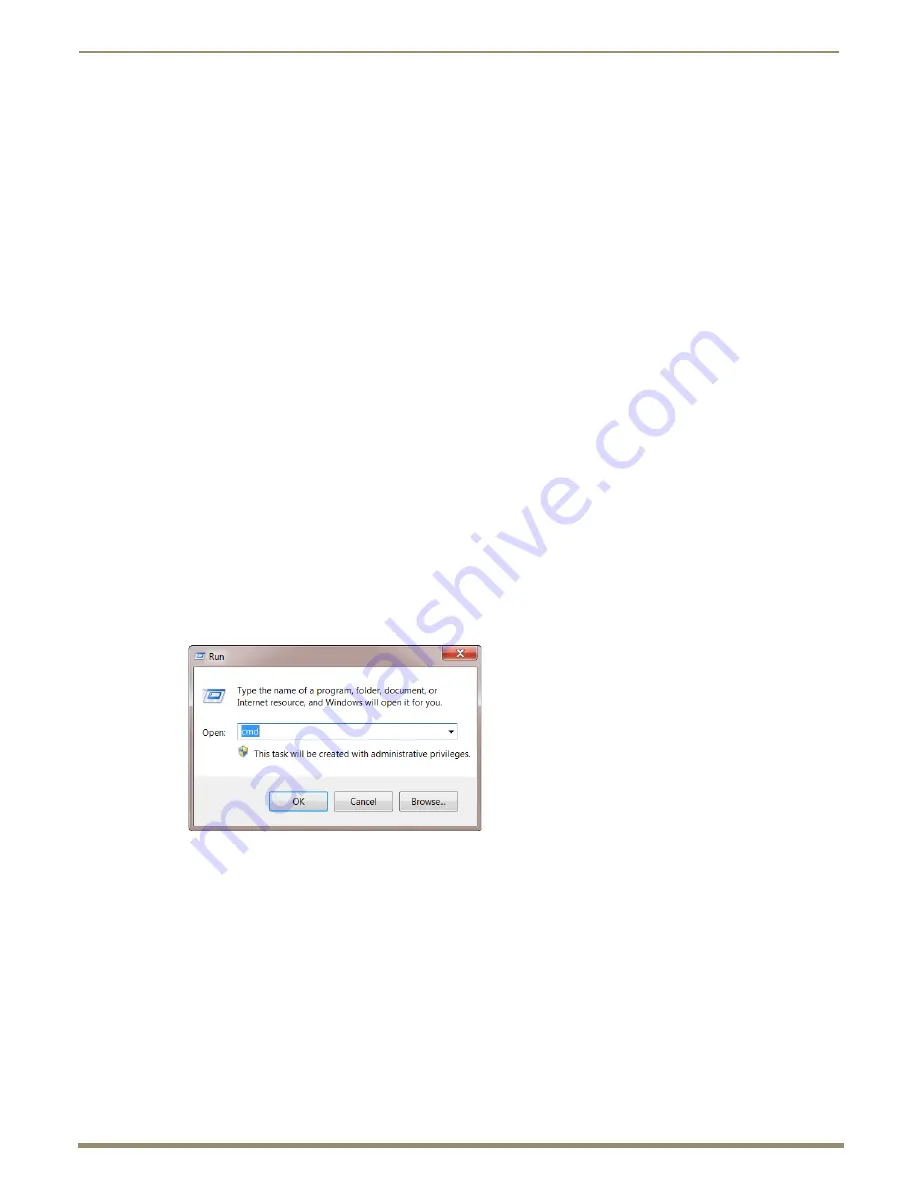
Appendix B – Telnet (Terminal) Commands
104
Instruction Manual – DXLink Fiber Transmitters and Receivers
Appendix B – Telnet (Terminal) Commands
Establishing a Terminal Connection Via Telnet
Telnet
terminal communication is accessed remotely via TCP/IP. The DXLink Fiber Transmitter or Receiver
must
have
its own TCP/IP address for a Telnet connection. The connection can be started from the Windows taskbar (see below) or
in NetLinx Studio (see the following page).
By default, a username and password are not applied to the Telnet port (Port 23). Therefore, the port does not require
login credentials. If you require a username and password for security purposes, directions for setting them are on
page 106.
Welcome Banner with and without security enabled (Receiver shown):
Without Telnet security enabled, a session will begin with a welcome banner similar to the following:
Welcome to DXF-RX-xxD v1.0.6 Copyright AMX LLC 2014
>
If Telnet security is enabled, user credentials are required:
Enter username: admin
Enter protected password: ****
Welcome to DXF-RX-xxD v1.0.6 Copyright AMX LLC 2014
>
Note:
When security is enabled, a user can retry logging in three times before being disconnected (for
information on setting a username and password, see page 106).
To establish a terminal connection via Telnet at the CMD prompt:
1.
From your Windows Taskbar (at far left), select Start > Run to open the Run dialog box.
2.
Type
cmd
in the Open field.
3.
Click OK to open an instance of the Windows command interpreter (cmd.exe).
4.
At the prompt (
>
), type
telnet
followed by a space and the Transmitter or Receiver’s IP address. Press Enter.
Example:
>telnet XXX.XXX.XXX.XXX
A Telnet session opens for the Transmitter or Receiver and the Welcome Banner appears.*
5.
At the prompt, type the Telnet command (see the table starting on page 106) and press Enter.
* If you are using Windows 7 and receive an error message, you may need to enable Telnet by completing the following:
(1) Go to Start / Control Panel / Programs and Features. (2) On the left, select “Turn Windows features on or off.”
(3) Select the check-boxes: Telnet Client and Telnet Server. (4) Click OK.






























